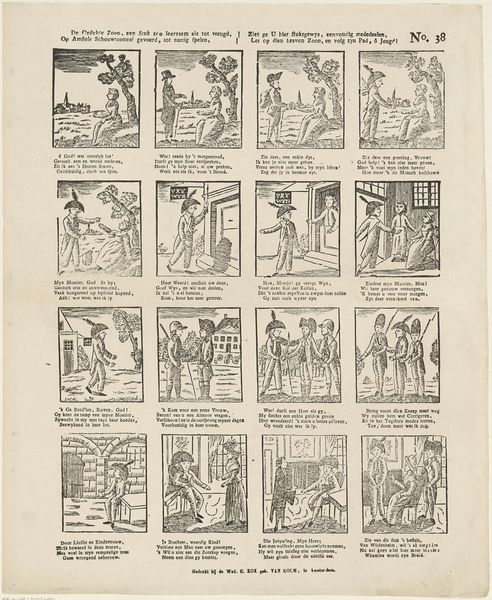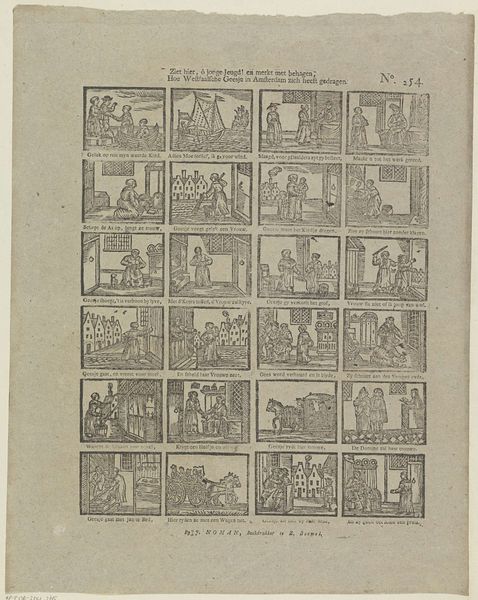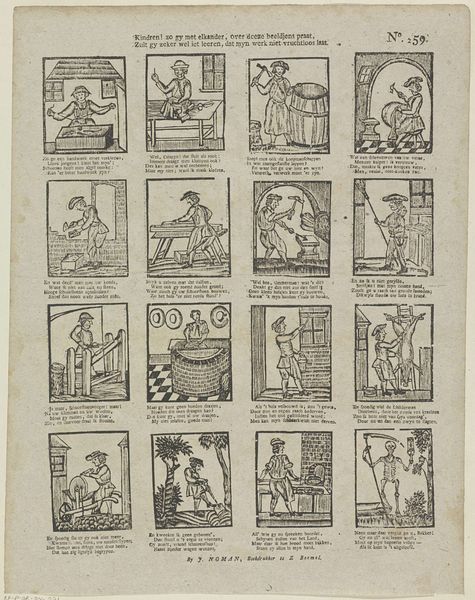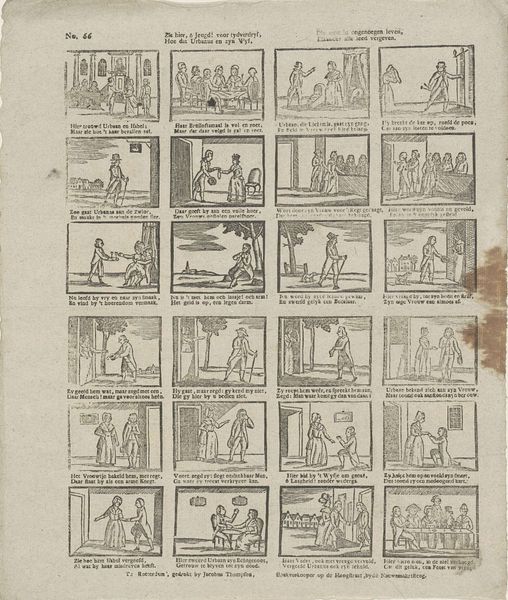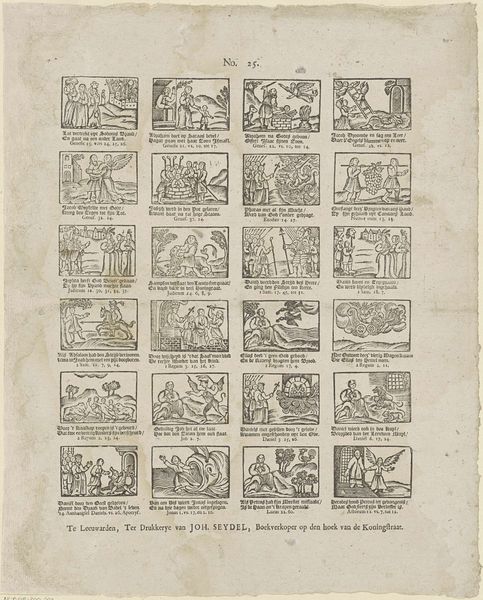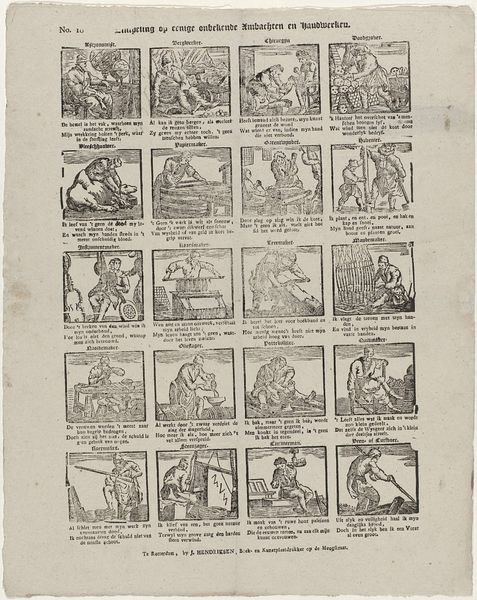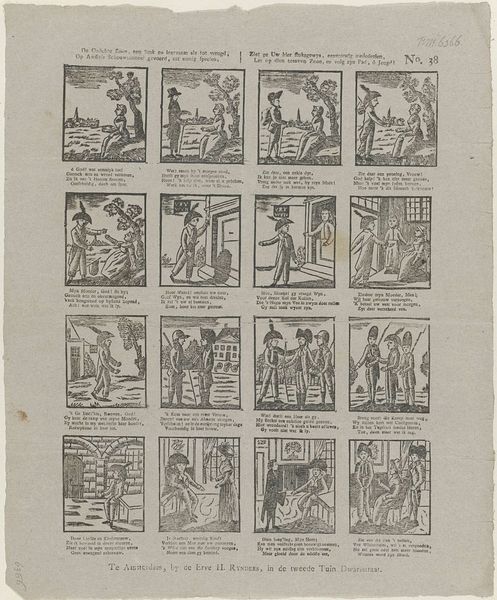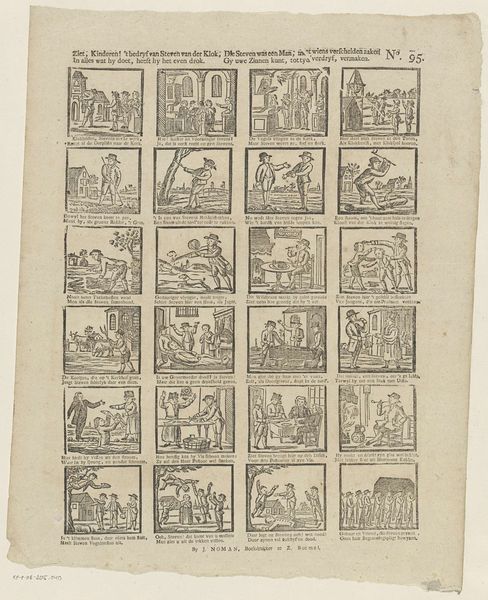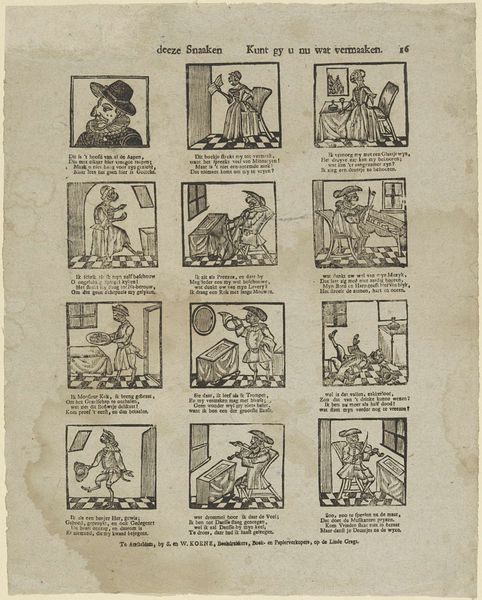
Hier ziet ge ô jeugd het boeren-leven, / Ook beesten die ons voordeel geven, / Zy strekken beide ons tot vreugd, / In werkzaamheid, gepaard met deugd 1842 - 1866
0:00
0:00
print, engraving
#
animal
# print
#
old engraving style
#
horse
#
genre-painting
#
engraving
Dimensions: height 394 mm, width 322 mm
Copyright: Rijks Museum: Open Domain
Curator: This engraving, dating from 1842-1866, is entitled "Hier ziet ge ô jeugd het boeren-leven, / Ook beesten die ons voordeel geven, / Zy strekken beide ons tot vreugd, / In werkzaamheid, gepaard met deugd," created by weduwe C. Kok-van Kolm. It's part of the Rijksmuseum collection. Editor: My goodness, what a dense composition. It reminds me a bit of a sampler, but instead of stitching, we're presented with these multiple, grid-like engraved scenes. Curator: Yes, the print is absolutely teeming with images—genre scenes alongside animals—each small vignette speaking to rural life and, according to the title, its inherent virtue and pleasure for the youth. Each image seems almost like a small memory container. Editor: And they seem deliberately compartmentalized. The rigid framing of each miniature scene emphasizes separation while all existing within the same overall plane. Do you think the intent here is to emphasize that separation of roles and classes in agricultural life? Curator: It certainly gestures toward the didactic. It speaks of the youth seeing country life, also the animals that serve us usefully. They both bring pleasure in industriousness coupled with virtue. It appears there may be a deliberate contrast intended here, to teach. The work evokes a kind of memory palace, if you will. Editor: The lines, while consistent in their hatching and mark-making, aren't especially elegant. The forms feel quite stiff and formal, lending the overall composition an archaic quality. This makes me wonder what associations it might have had in its own time. Nostalgia for simpler agrarian days? Curator: It's more than possible, especially during this period. The rise of industrialization prompted artists and cultural figures to mythologize a past ideal of rural labor and harmony with nature. The artist appears to lean on the weight of tradition in rural virtue to encourage similar thought. Editor: It certainly succeeds at creating that impression. Even divorced from its historical context, the formal qualities transmit the impression of looking back, fondly perhaps, but undeniably through the lens of idealization. Curator: Absolutely. And thinking about this work's longevity—that this image survived over a century tells a very important story. Editor: A story that we continue to decipher as these artifacts transition further into our future.
Comments
No comments
Be the first to comment and join the conversation on the ultimate creative platform.
